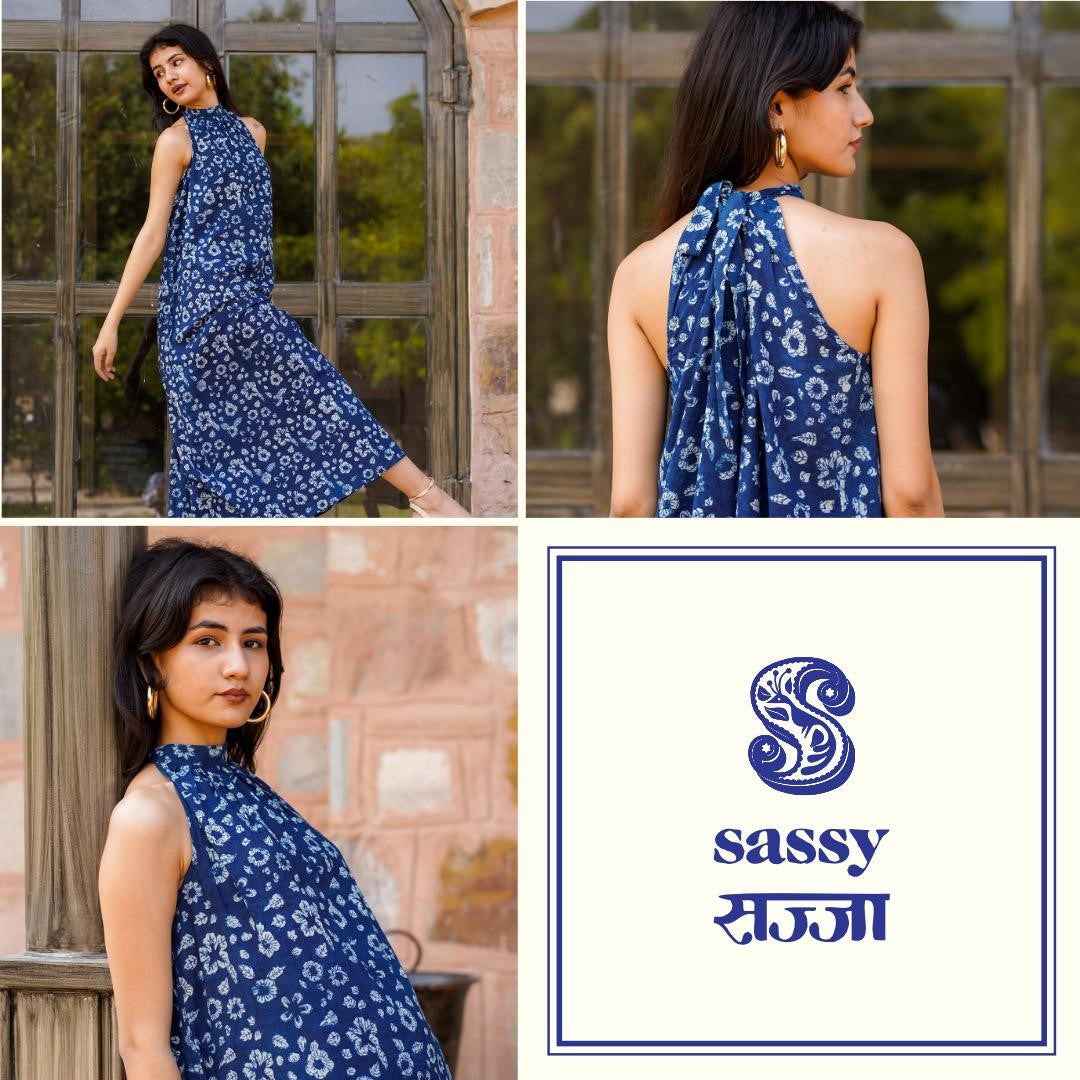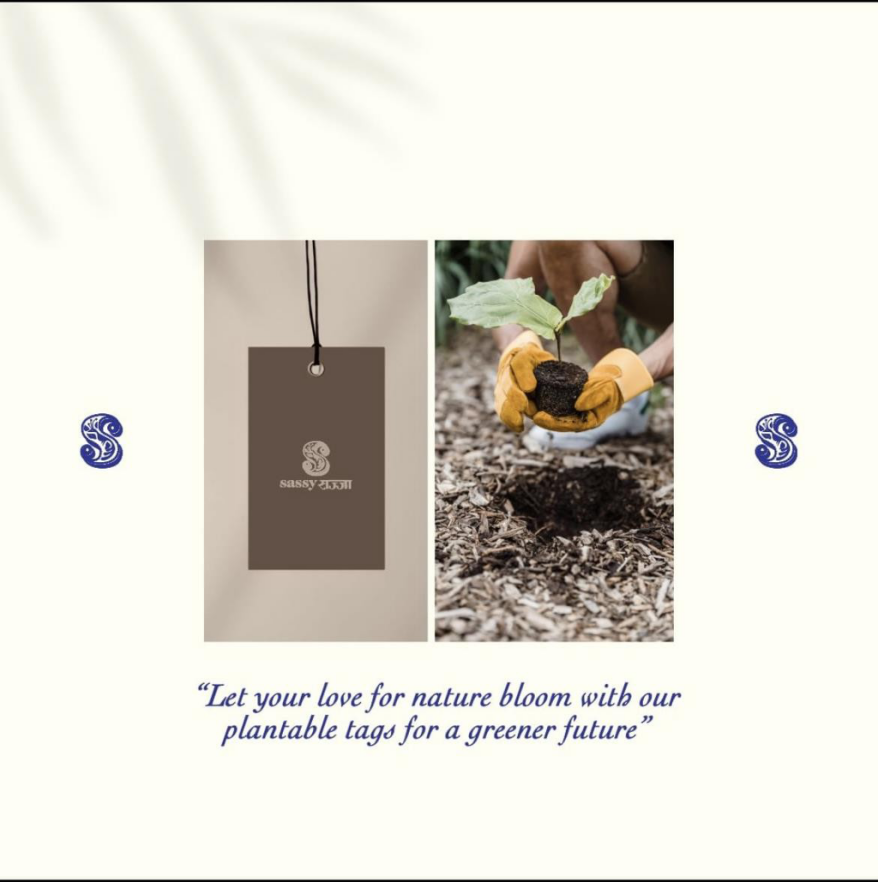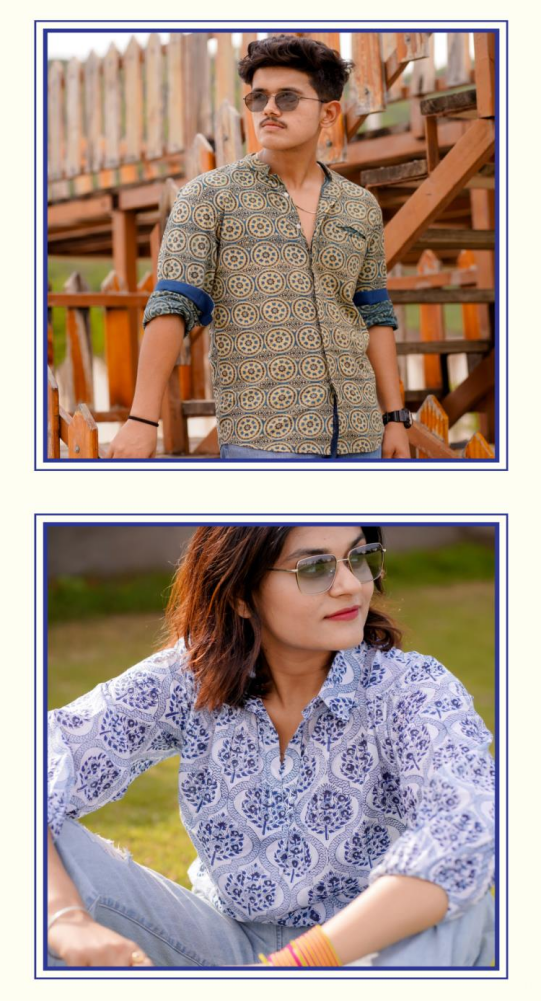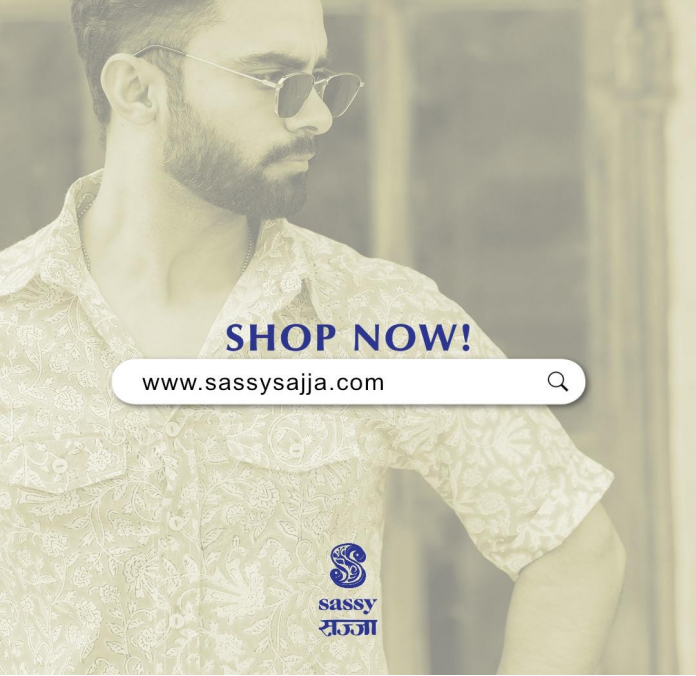ABOUT THE FOUNDER
The Brand is a brain child of Ms. Riddhi Chandrawat who is a law graduate and has 9 years of experience in social service which she wants to capitalise towards a viable brand of social entrepreneurship.
As a responsible citizen, since 2014 she has benefited lakhs of children with free and compulsory education through RTE (Right to Education) in Private Schools of Rajasthan. By reason of her love and sensitivity towards the environment, she facilitated the creation of nine Urban Jungles consisting 7000 trees.
Now, through this brand she envisions to increase the livelihood and enhance the working experience for artisans especially women. Her vision is to make Rajasthan’s textile heritage accessible to people across the world in a sustainable way.
1. THREAT TO ART
With an overwhelming allure towards the fast fashion, the traditional textile art which is labour-intensive, time-consuming and little pricey have lost both the interest of consumers and commercial viability. This disinterest among consumers has resulted in pushing some of the intricate ancient treasures of textile towards the verge of extinction. There are very few artisans who are currently engaged or willing to involve future generations in authentic textile art like Sanganeri Hand block printing, Bagru Printing, Bandhani, etc.
Furthermore, the consumer shift towards westernisation has diametrically changed the clothing preferences of substantial populace. Transcending the Indian cultural outfits, Indian fashion outlook has experienced a major shift towards western wear and workwear outfits.

HOW SASSY SAJJA ENVISIONS TO ADDRESS THIS?
We endeavours to build fashionable and classic pieces of clothing on the strength of traditional textile art forms thereby creating a considerable demand for traditional art forms which could support the livelihood of artisans. Our designs aim to cater the huge demand for western wear and workwear functional outfits without harming the pockets of middle class working population.
In order to reinvigorate the declining textile art forms, we envision to conduct periodic training programmes for younger generation and unskilled interested people.
2. THREAT TO ENVIRONMENT
The carbon footprint and environment impact of fashion industry hasn’tremained a concept of theory yet assumed a horrendous observable reality. As per UN Environment Programme (UNEP), the industry is the second-biggest consumer of water and is responsible for about 10% of global carbon emissions.
The increased commercialisation and attraction towards cost-effective screen prints has spurred usage of synthetic dyes and resultant dumping in the waterbodies. This practice has severely impacted the environment while making surroundings inhospitable for human dwelling.
The usage of synthetic fabrics and distantly-sourced fabrics involves usage of fossil fuels and has a huge impact on environment. The prevalence of fast fashion has triggered the consumer behaviour of frequent and mindless consumption of clothing which end up in landfills causing disastrous impact on our environment. Fast fashion has certainly lowered the clothing cost at the rising cost on environment.

HOW SASSY SAJJA ENVISIONS TO ADDRESS THIS?
Sassy Sajja is slow fashion brand which promotes gender-inclusive fluid fashion and fashion which can be styled in varied ways to halt the consumer behaviour of frequent consumption. We endeavour to use only natural fabrics and source all our raw material and technique from local market thereby reducing the fossil fuel footprint on environment.
We use paper bags and plantable tags to reduce the usage of plastic to bare minimum in the event of necessity. To inch our brand toward the carbon neutrality, we have pledged to plant a sapling on every purchase from our brand.
Furthermore, contributing towards the circular fabric economy, we endeavour to create a collection of upcycled clothing pieces from the used, torn and waste fabric.

3. THREAT TO INTELLECTUAL PROPERTY RIGHTS
The emergence of big factories and their heightened urge to earn more profits has led to the fraudulent impersonation of screen prints in the name of Handblock prints. This runs strikingly in contravention to the protection of GI Tag accorded to the Art of Sanganeri Handblock printing and Bagru Handblock printing ensuing loss of livelihood for artisans and widespread defrauding of consumers.
HOW SASSY SAJJA ENVISIONS TO ADDRESS THIS?
Sassy Sajja is not just a commercial clothing brand but envisages to create a pool of knowledge which will help consumers to differentiate between different types of prints and their associated legal safeguards under Indian law. We make an irrevocable commitment to offer authenticity as per description to our consumers.
WHY WE SHOULD GET THE GRANT?
Our idea of curating modern, functional and sustainable outfits with the help of Traditional textile art is our Defensible Differentiation for following reasons:
1. THERE ARE VERY FEW MARKET PARTICIPANTS WHO ARE MAKINGWESTERN OUTFITS USING TRADITIONAL ART FORMS.
Currently, the existing brands which are engaged in traditional textile art forms are majorly confined to Indian or Indo-fusion clothing pieces. The Global western wear market size is approximately 99,423 million dollars and is expected to rise multifold in subsequent years. There is a huge demand for both traditional Indian textile art forms and western wear outfits both nationally and internationally which we envision to integrate and nudge on.

2. THE EXISTING MARKET PARTICIPANTS DEALING IN TRADITIONAL ART FORMS ARE EXPENSIVE AND IS ILL- SUITED TO THE POCKET OF HUGE MIDDLE-CLASS POPULACE OF INDIA.
The handful of market participants which are currently engaged in traditional textile art forms is extremely pricey and unaffordable whereas Sassy Sajja offers the same art form at considerably reasonable prices because of its local sourcing and robust supply chains.
3.POTENTIAL TO BECOME A “CARBON NEUTRAL BRAND
With a definite focus on ecological health and conscious check on the carbon footprint from the very outset, Sassy Sajja has a potential to become a carbon neutral brand. The team of Sassy Sajja has an admirable record of systematic creation of green cover which can be capitalised in this brand to reduce the carbon footprint of fashion industry.
4. TOOL FOR SOCIAL CHANGE
Each collection of Sassy Sajja holds with it a story and potential to create awareness on social issues like Gender Equality, Circular Fashion Industry, Reviving Indian heritage, LiFE (Lifestyle for Environment), etc. Since the advent of human civilisation, fashion occupy an important space in the Indian social structure and espouses a huge potential to convey the social realities. We firmly consider fashion as tool of social emancipation and thus endeavours to bring transformative change in the society through this.
BUSINESS MODEL

Sassy Sajja is a B2C business model which directly operate through its own e-commerce website and social media handles. In case of additional financial grant, we plans to expand our brand through other multi-brand B2C platforms & B2B model. The e-commerce platform offers significant reach and can enable the transport of Rajasthan’s textile art globally with just a click.
Furthermore, the data collected from customer profiling can be purposively utilized to plan future collection and to offer improved shopping experience to customers.
OUR TEAM
- Our team of Designers study the consumer preferences across the globe and create a pool of designs based on the result of research. They then work in tandem with local artisans and integrate different traditional art forms to create functional and modern outfits designs.
- Our Sourcing manager then set up the local supply chain for fabric, printing, stitching, packaging, etc.
- Our Creative team thenconceptualises the photo and video shoots, create content for promotions and awareness, compile the research work and execute the shoots.
- Our Management and Finance team evaluate the expenses to determine the MRP Retail Price) of each produc.
- Our Marketing team evaluate the consumer profiling and run dedicated Social media Ads to promote the idea and product of the Brand. We endeavour to employ other marketing mediums to promote our idea like cross-state/cross-border Collaboration Pop-ups, exhibitions, interviews of artisans and other stakeholders, interviews of people of influence, etc.
- We have a dedicated team who precisely and dedicatedly focus on enviro-social responsibilities of the Brand.
MARKET SIZE
The global fashion e-commerce market is $821.19 billion in 2023 while the Indian Fashion e-Commerce market is predicted to reach US$9,283.1 million by 2023 and accounts for 16.1% of the total e-Commerce market in India.
We are initially targeting the huge middle class in India and will gradually target the affluent sections with the conscious appeal towards nature. With our quality product, we plan to target not just national market but international markets too.
-
COMPETITION
From an ethical perspective, our prime competitors are fast fashion brands which offer cheap and synthetic clothing pieces. We are apprised with the reality that breaking the rigid allurement towards fast fashion isn’t going to be plain sailing. Our another competitor are those brands which misrepresent cheap screen print as block print or bandhej for it is extremely difficult for a consumer to differentiate between the two on an e-commerce platform.
However, considering the humongous market of Fashion e-commerce, there is adequate potential for all the existing players for commercial manoeuvring.
-
CURRENT STATUS AND TRACTION
To kick start the operations, we have readied approximately 2000 pieces of clothing and started the sales from July 18, 2023. We have received average 5 orders every day in last 15 days and expecting at least a two-fold rise from next month.






